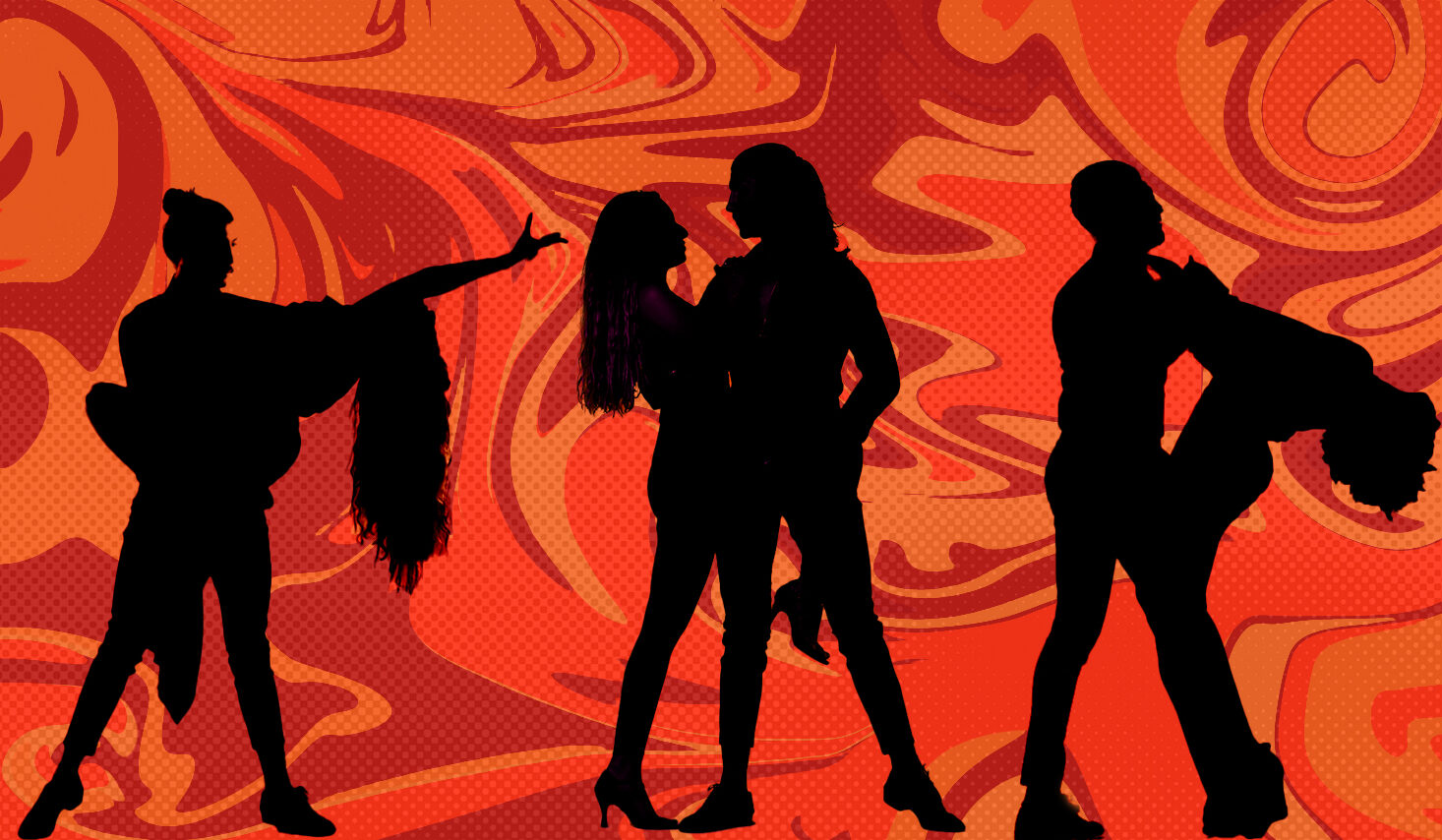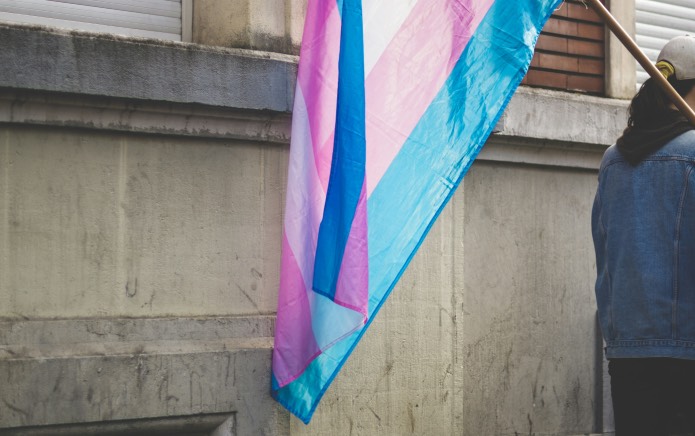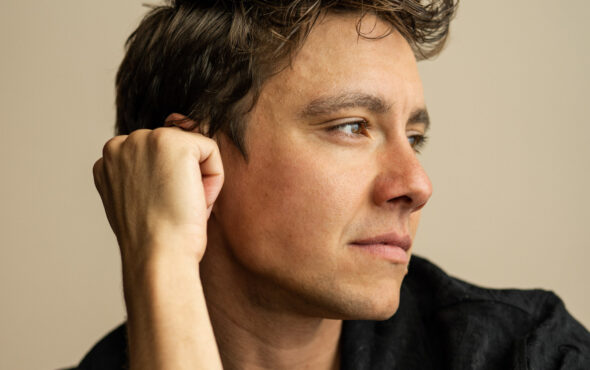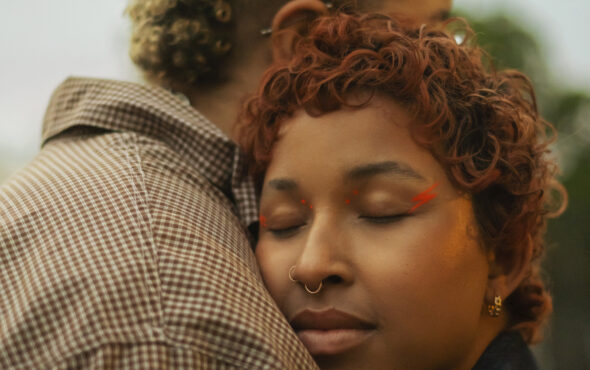
Back in 2001, Mariana Docampo started teaching tango classes at La Casa Del Encuentro, a storied lesbian cultural centre in the heart of Buenos Aires, Argentina. “The roles [of tango] were [seen as] very rigid,” she tells GAY TIMES. “The man would lead and the woman would follow.” In Docampo’s eyes, it was practically impossible to imagine two women dancing together – the vast majority of people couldn’t even fathom the idea of a woman leading her partner, let alone enjoying herself in the process. “People assumed I was taking that guiding role as a teacher because I had to, not because I actually liked it,” she recalls. “It was a different era.”
When you think of the word “tango”, many immediately conjure up romanticised and heavily gendered notions of love, sensuality and romance. When, infact, it’s a practice steeped in tradition and a sense of national pride, yet its origins can actually be traced back to slaves shipped into Argentina throughout the 19th century. Scholar Sylvain Poosson paints a vivid picture of slaves holding vibrant, late-night parties, filled with music, dance and laughter. “Dancing was affirming one’s existence,” he wrote, describing these fiestas as a means of survival.
“To think that what started with eight-person classes has transformed into the movement we have today is a lot!”
By the late 19th century, slavery had been abolished and descendants of slave families had largely taken root along the banks of the Río de la Plata, which separates Argentina and Uruguay. There, they built communities alongside other immigrants and poor Argentinian families, and it’s in these neighbourhoods that the earliest iterations of Argentine tango as we know it today took place. Crowds would dance to the songs of gauchos, or cowboys, without understanding their lyrics, so they simply called them milonga, which means “an argument” in Kimbundu. The term is still used today; in modern-day Argentina, it’s synonymous with tango.
By 2005, Docampo decided to create an alternative to what she described as the “heteropatriarchal image of tango” so often treated as default. That year, she set up La Milonga Tango Queer, programming classes with the basic aim of allowing people to dance freely, in whatever role they wished. The early classes were tight-knit, intimate and liberating. While just a handful of members showed up, many of them were already Docampo’s students, but they revelled in the newly created space.
View this post on Instagram
What started as a small, community-led initiative, quickly snowballed into an impactful movement. The timing just so happened to coincide with the creation of the Argentine Federation of Lesbian, Gay and Trans (FALGBT), also formed in 2005, a coordinated activist effort to campaign for issues like the legalisation of gay marriage, and legal recognition of trans people. Docampo’s classes began selling out quickly, so in 2007, she turned to Augusto Balizona, an organiser of another long-running Buenos Aires queer tango, La Milonga Gay La Marshall. Together, they co-created the Festival Internacional de Tango Queer de Buenos Aires, which this year celebrated its 15th anniversary. While the festival was on hiatus throughout the pandemic, it’s since showed no sign of slowing down. Docampo still speaks of these achievements in disbelief: “To think that what started with eight-person classes has transformed into the movement we have today is a lot!”
Better still, the rise of queer tango in Buenos Aires has opened doors for a new generation of milonga organisers. Perhaps the best-known example is the team behind Batacazo Cultural. Explicitly trans-inclusive, the cosy venue has a varied program: alongside tango classes, you’ll find erotic art exhibitions, queercore celebrations and screenings of queer cult classics. Drop in and you might see a trans artist performing slam poetry, a crowd of introspective onlookers sat cross-legged on the floor, eating vegan hamburgers and falafel wraps. It’s fast becoming a vital venue for indie musicians too, platforming everything from experimental punk to high-octane electronica.
View this post on Instagram
Docampo credits this new wave of queer organisers with diversifying the tango scene even further, bringing new perspectives on a hallowed tradition. “It’s important to listen to new generations, and to always keep an eye on what’s happening around us.” This latter sentiment is especially relevant right now, as the hard-fought victories of queer communities across Argentina are under significant threat.
In late 2023, Javier Milei – described in a Guardian op-ed as an “anti-woke libertarian” — came to power, after a campaign built on criticising the previous “socialist” regime for its decriminalisation of abortion, as well as its progressive laws on gender identity recognition. “Argentina is facing an economic and institutional crisis,” explains Damian, cultural director at Federación Argentina LGBT (FALGBT). “The LGBTI+ community is in a pretty stressed-out emotional state; there’s so much fear of losing the rights which protect us.”
“These spaces create new ways of living and breathing tango, and deconstructing its stereotypes”
The last few weeks have seen a mass wave of protest across Argentina, led in no small part by LGBTI+ activists fighting to preserve past victories. “We’re fighting against the way in which the far right is basically trying to eliminate our rights of existence on all levels, from healthcare to work,” said Federica Baeza, an activist quoted in a recent Guardian write-up of a nationwide strike. The FALGBT is one of many organisations creating new webs of resistance, taking to the streets and fighting back against prejudice. Damian is optimistic that decades of community-building won’t be eroded by one far-right regime. “The good thing is that, throughout this crisis, resistance, love and fighting spirit are ongoing,” they state. “We’ll make sure it carries on that way.”
Within this turbulent political context, the rise of queer milonga isn’t just about deconstructing old traditions and finding joy in the art of tango, it’s about creating space for LGBTQ+ people of all descriptions to come together, find common ground and create new networks. Damian says there’s still a long way to go before even Buenos Aires’ tango scene can be called truly inclusive, but it’s the venues and communities resulting from this wave of success that matter the most. “These spaces create new ways of living and breathing tango, and deconstructing its stereotypes,” he concludes, “but queer milonga is in a constant state of flux. It’s always being reshaped, and that’s thanks to a new generation of organisers who keep that evolution ongoing.”



